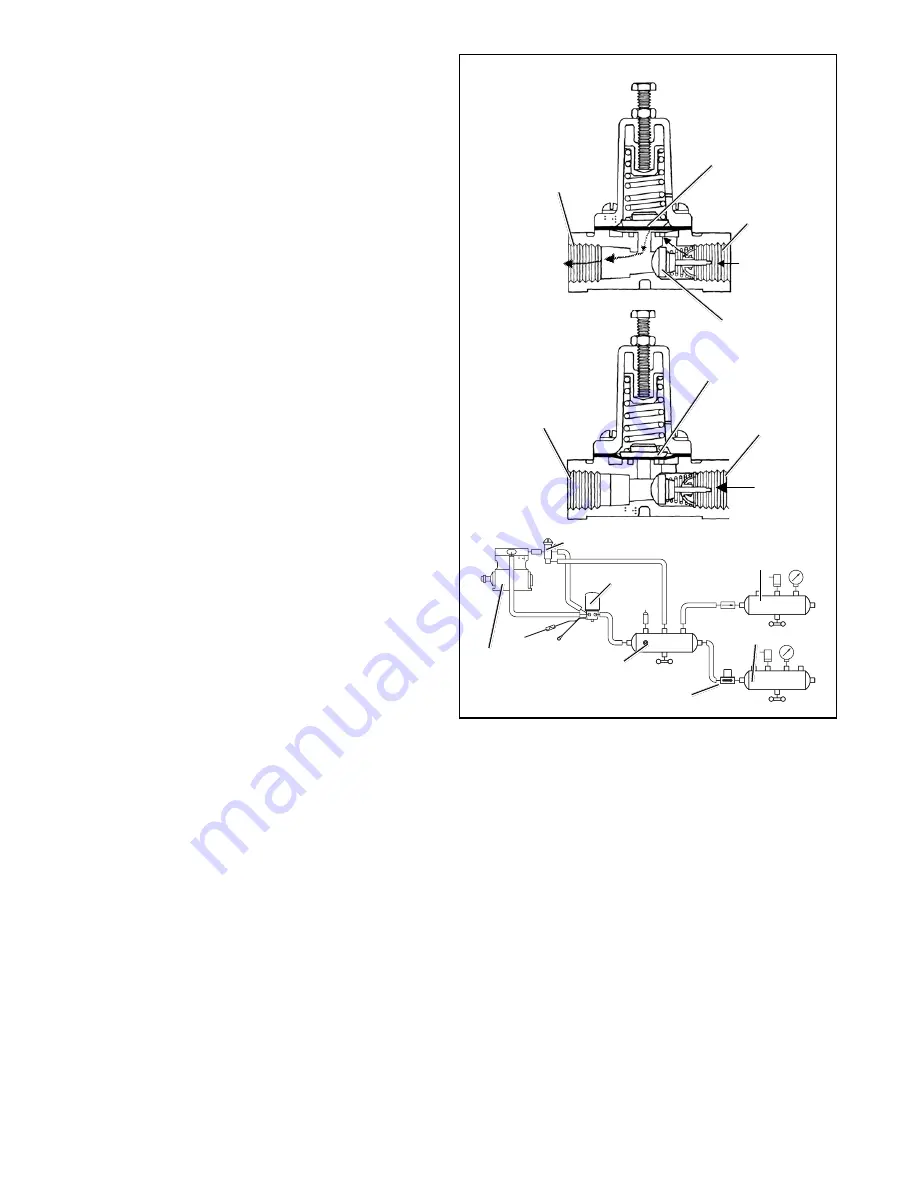
6
When supply pressure reaches 100 psi, the diaphragm moves
away from its seat and air entering the supply port flows through
the pressure protection valve portion, as well as the single
check valve portion, and into the front axle service reservoir.
The pressure protection valve remains open as long as
supply pressure remains above 95 psi.
PURGING
When the AD-SP
™
air dryer begins its purge cycle, air from
the supply and front axle service reservoirs flows back to
the air dryer to re-activate the desiccant. Air flowing from
the front axle service reservoir to the supply reservoir must
pass through the SC-PR
™
pressure protection valve portion
because the single check valve portion is closed to flow in
that direction.
Since an AD-SP
™
air dryer purge cycle begins at governor
cutout (120 psi minimum) and only reduces reservoir air
pressure 8 - 14 psi, the SC-PR
™
pressure protection valve
will normally remain open. If a malfunction occurs that
causes the supply reservoir to lose pressure, air from the
front axle service reservoir will flow back to the supply
reservoir until the pressure beneath the SC-PR
™
pressure
protection valve diaphragm falls to approximately 95 psi.
With 95 psi or less beneath the diaphragm, spring force
moves the diaphragm into contact with the inlet seat and
air flow to the supply reservoir ceases. The supply reservoir
will continue to lose pressure, however 95 psi will be retained
in the front axle service reservoir for braking.
Any malfunction occurring between the compressor and
SC-PR
™
valve that causes pressure to drop below 95 psi
will result in the SC-PR
™
pressure protection valve closing
and protecting the front axle service reservoir.
PREVENTIVE MAINTENANCE
Important: Review the warranty policy before performing
any intrusive maintenance procedures. An extended warranty
may be voided if intrusive maintenance is performed during
this period.
Because no two vehicles operate under identical conditions,
maintenance and maintenance intervals will vary.
Experience is a valuable guide in determining the best
maintenance interval for any one particular operation.
Every 900 operating hours, or 25,000 miles or three (3)
months:
1. Check for moisture in the air brake system by opening
reservoirs, drain cocks, or drain valves and checking for
presence of water. If moisture is present, the desiccant
cartridge may require replacement; however, the following
conditions can also cause water accumulation and
should be considered before replacing the desiccant:
DIAPHRAGM
SUPPLY
PORT
DELIVERY
PORT
SINGLE
CHECK
VALVE
SUPPLY
PORT
DIAPHRAGM
DELIVERY
PORT
SUPPLY
RESERVOIR
AD-SP
™
AIR
DRYER
COMPRESSOR
GOVERNOR
SC-PR
™
VALVE
REAR AXLE
RESERVOIR
FRONT AXLE RES.
FIGURE 7 - SC-PR
™
SINGLE CHECK PROTECTION VALVE
PURGE POSITION*
NORMAL PURGE
PROTECTION
FUNCTION
A. An outside air source has been used to charge the
system. This air does not pass through the drying
bed.
B. Air usage is exceptionally high and not normal for a
highway vehicle.
This may be due to accessory air demands or some
unusual air requirement that does not allow the com-
pressor to load and unload (compressing and
non-compressing cycle) in a normal fashion. Check
for high air system leakage. If the vehicle vocation
has changed it may be necessary to upgrade the
compressor size. Refer to Appendix A, Table A and
the column entitled Vehicle Vocation.
C. The air dryer has been installed in a system that
has been previously used without an air dryer. The
system will be saturated with moisture and several
weeks of operation may be required to dry it out.
*Cutaway views are functionally correct, but do not represent current form of SC-PR
™
valve.







































